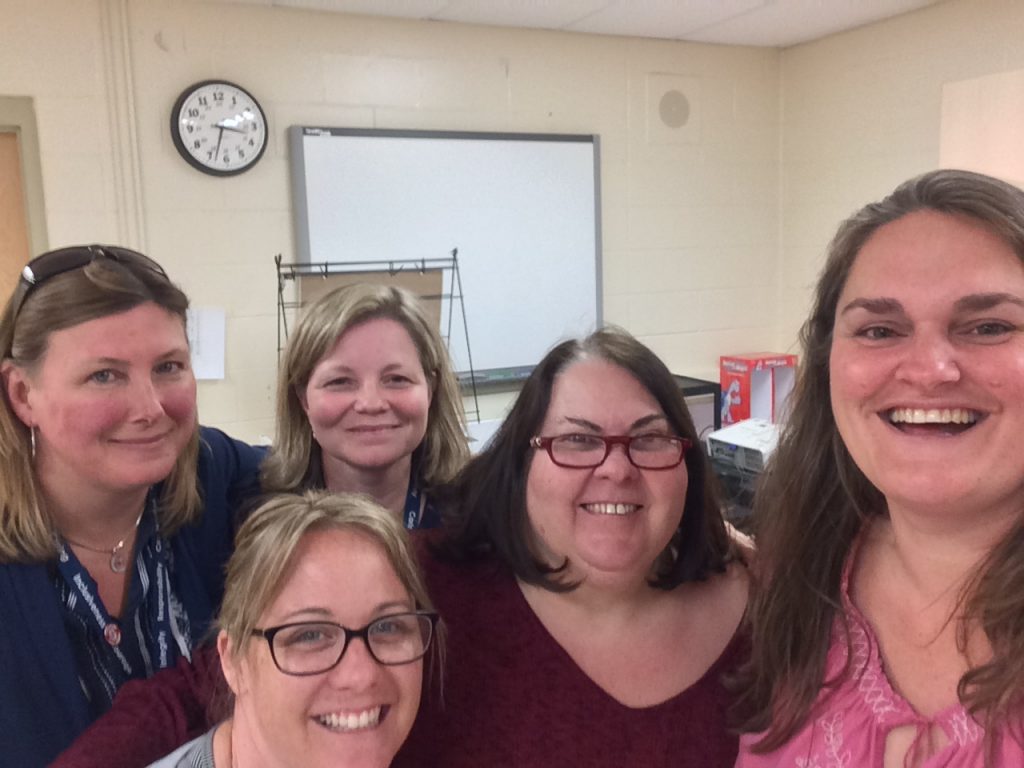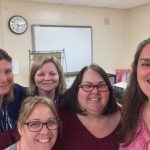Current research into early understanding of spatial reasoning concepts show that students who engage in tasks targeting these concepts improve not only their spatial reasoning but also their understanding of number concepts. We will explore the current research to develop our own understanding of spatial reasoning. We will co-plan, co-teach and debrief specific spatial reasoning lessons and tasks in full-day kindergarten classrooms and record students work using iPads, Seesaw app and student interviews. Using current research such as Taking Shape (Moss, J., et al.) will allow us to explore the development of spatial reasoning in our students. We will use a collaborative learning cycle to explore how students develop the skills of visualization, mental rotation, visual-spatial working memory, information processing, spatial language and gestures. Lessons will include spatial tasks such as Symmetry; Composing, Decomposing and Transforming Two-Dimensional Shapes; Composing, Decomposing and Transforming Three-Dimensional Objects; Locating, Orienting, Mapping and Coding; and Perspective Taking. Student understanding will be assessed before and after engaging in the tasks. In addition, we will plan how to embed spatial reasoning tasks in the classroom while honouring the play-based options and choice essential to the full-day kindergarten program.
Team Members
Kit Luce
Simcoe County District School Board
Monica Goodfellow
Simcoe County District School Board
Angela King
Simcoe County District School Board
Barb Gougeon
Simcoe County District School Board
Emily Mancini
Simcoe County District School Board
Team Photo

Professional Learning Goals
Through this project, we expected to develop a deeper understanding of particular aspects of spatial awareness and geometry – Symmetry; Composing, Decomposing and Transforming Two-Dimensional Shapes; Composing, Decomposing and Transforming Three-Dimensional Objects; and Locating, Orienting, Mapping and Coding.
We also expected to explore more fully the integration of outdoor and indoor learning, student choice and educator instruction.
As educators, this project enabled us to deepen our conceptual understanding of spatial reasoning and awareness, particularly in the areas of symmetry and composing and decomposing shapes, figures and objects. We were able to become more adept at embedding these tasks into the classroom, providing provocations, and to make the learning visible by prompts and questions. We also developed a greater understanding of the developmental stages of spatial reasoning and awareness, and how to effectively assess student understanding.
Activities and Resources
We began with a study of current research, including Taking Shape (Moss, J., et al.). We met to co-plan, co-teach and debrief during half-day sessions about how to best implement and assess student understanding. Documentation included one-to one-interviews with students using iPads to record student understanding.
Both classrooms began with the initial assessment and with teaching and exploring symmetry using the resources in Taking Shape, and continued with the tasks, activities and games associated with Composing and Decomposing Two-Dimensional Shapes. As the year progressed, one class branched off to explore Composing and Decomposing Three-Dimensional Objects, and the other delved into Location and Movement tasks.
Resources used included:
- iPads in the classroom
- Taking Shape: Activities to Develop Geometric and Spatial Thinking Grades K-2 (Moss, J., et al., 2016)
- Taking Shape web resources: www.pearsoncanada.ca/takingshape
- Paying Attention to Spatial Reasoning – Ministry of Education
- http://learnteachlead.ca/
- Geometry for Young Learners: https://www.sfu.ca/geometry4yl.html
Unexpected Challenges
Younger students require a lot of scaffolding and a lot of time to learn lesson specific vocabulary. The attention span of kindergarten students is very short, making it difficult to get to the key questions during the lesson. It was difficult for many of them to lock the cubes together because of the lack of motor skills at this age. We found the length of some of the instructions too long for them. Rotations of 3D objects is visually difficult at this age. The new full-day kindergarten program is inquiry- and play-based, so a number of lessons had to be modified to fit into this program as giving direct steps is not part of the program. As well, some of the manipulatives were new for them and some of the students were more interested in the manipulative then the activity. Since a big part of our program is outdoor education, lessons were created in addition to the lessons provided that could be done outside, however, some lessons were not conducive to being carried out outside. The lessons included an extension to make the lessons more difficult, however, they were no extensions for students who struggled with the initial lesson (e.g., children who could only follow one- and two-step instructions).
Enhancing Student Learning and Development
This project enhanced student learning by embedding spatial reasoning concepts and activities throughout the school year, thereby helping students revisit and deepen their understanding. The connection between conceptual understanding of spatial reasoning and number sense has been made clear in the research. This project encouraged the development of problem-solving skills, communication of math thinking, reasoning and proving, comfort with math manipulatives, and applying learned strategies in different contexts. These are all important learning skills that will support students as they move through elementary school.
Sharing
Our learning has been shared in a variety of ways. Updates were provided at monthly staff meetings, both at the school level and the central level. We presented our learning and findings in two different sessions at the OAME 2017 (Ontario Association for Mathematics Educators annual conference). Regular updates were made via social media including Twitter accounts. Perhaps the sharing that had the most impact was the every day and ongoing conversations we had with fellow educators about the impact on student learning and the ways that students were learning about and talking about spatial reasoning. The students amazed us daily with their deep thinking and noticing.
Project Evaluation
This project was an unqualified success. The two educator teams worked closely together, both planning, implementing and assessing student understanding of the concepts. Due to our conceptual understanding of spatial reasoning and awareness, particularly in the areas of symmetry and composing and decomposing shapes, figures and objects, we were able to become more adept at embedding these tasks into the classroom, providing provocations, and making the learning visible by prompts and questions. We also developed a greater understanding of the developmental stages of spatial reasoning and awareness, and how to effectively assess student understanding.
As we evaluated the project this year, we realized that this resource is a perfect fit for the two years of full-day kindergarten. It was challenging to honour the play- and inquiry-based model with the structure of teaching and implementing the tasks. This is an area we will continue to explore, as well as the opportunity to move these activities outdoors and adapt them to the outdoor classroom model.
In addition, we wish to build on the momentum and energy created by the project and support other educators in our building to deepen their own understanding of spatial reasoning and to realize how they can adapt these activities to many different grade levels.
Resources Used
Taking Shape: Activities to Develop Geometric and Spatial Understanding
Authors: Joan Moss, Catherine D. Bruce, Bev Caswell, Tara Flynn, Zachary Hawes
Resources Created
These resources will open in your browser in a new tab, or be downloaded to your computer.


